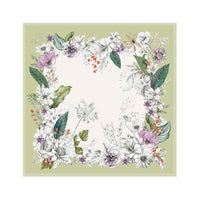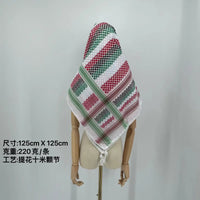1. Brushed Fabric (Pulling with Metal Hooks)
How It Works:
Brushing (or “raising”) is a mechanical process where fabric passes over rotating cylinders covered in tiny metal hooks. These hooks aggressively pull fibers from the yarn, creating a fuzzy, soft surface.
Key Features:
✔ Faster & cheaper — Great for mass production.
✔ Shorter, denser pile — Feels plush but can be slightly uneven.
✔ Stronger initial softness — Good for cozy sweatshirts, flannels, and fleece.
✔ Some fiber damage — The metal hooks can break a few fibers, reducing fabric strength slightly.

Where You’ll See It:
- Fleece jackets
- Flannel shirts
- Sherpa & terry cloth
- Cheaper blankets & loungewear
Downsides?
- Can feel a bit “scratchy” compared to teased fabrics.
- Less refined, more “casual” look.
2. Teased Fabric (Using Natural Teasels)
How It Works:
Teasing (or “teaseling”) is an old-school, artisanal method where fabric is gently brushed with dried teasel pods — a plant covered in tiny, flexible hooks. Instead of yanking fibers out, the teasels gradually align and elongate them, creating an ultra-smooth, silky finish.
Key Features:
✔ Longer, smoother fibers — Feels like liquid silk against the skin.
✔ Minimal fiber damage — Preserves fabric strength.
✔ Luxurious sheen — Fibers lie flat, reflecting light beautifully.
✔ Expensive & slow — Mostly used in high-end wool, cashmere, and alpaca.

Where You’ll See It:
- Luxury cashmere sweaters
- High-end wool coats
- Premium blankets (like authentic Kashmir shawls)
- Vintage-style corduroy (for a refined finish)
Downsides?
- Way more expensive (hand labor + rare teasels).
- Not practical for fast fashion — this is slow craftsmanship.
2. Teased Fabric (Using Natural Teasels)
How It Works:
Teasing (or “teaseling”) is an old-school, artisanal method where fabric is gently brushed with dried teasel pods — a plant covered in tiny, flexible hooks. Instead of yanking fibers out, the teasels gradually align and elongate them, creating an ultra-smooth, silky finish.
Key Features:
✔ Longer, smoother fibers — Feels like liquid silk against the skin.
✔ Minimal fiber damage — Preserves fabric strength.
✔ Luxurious sheen — Fibers lie flat, reflecting light beautifully.
✔ Expensive & slow — Mostly used in high-end wool, cashmere, and alpaca.
Where You’ll See It:
- Luxury cashmere sweaters
- High-end wool coats
- Premium blankets (like authentic Kashmir shawls)
- Vintage-style corduroy (for a refined finish)
Downsides?
- Way more expensive (hand labor + rare teasels).
- Not practical for fast fashion — this is slow craftsmanship.
 |
Which One Should You Choose?
- Want something warm, affordable, and comfy? → Go for brushed fabrics (fleece, flannel).
- Want the softest, smoothest, most luxurious feel? → Look for teased finishes (cashmere, fine wool).
Final Thoughts
Did you find this helpful? Let me know in the comments — and if you’ve ever felt the difference between brushed and teased fabrics, share your experience!





